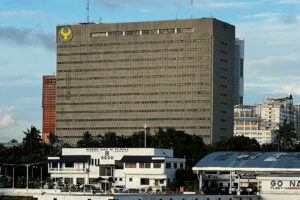PERSONAL EQUITY and Retirement Account unit investment trust funds (PERA-UITFs) are now exempted from a foreign ownership rule that limited their access to central bank securities, widening overseas Filipinos’ investment options.
Circular No. 1220 issued by the Bangko Sentral ng Pilipinas (BSP) on Oct. 17 said the Monetary Board has amended its rules covering monetary operations to exclude PERA-UITFs from the limit imposed on UITFs with nonresident participants that are investing in central bank securities in the secondary market.
“UITFs were previously allowed to invest in these securities provided nonresidents didn’t own more than 10% of the fund. The amendments in the regulations exempt UITFs accredited by the BSP as PERA-UITFs from that limit,” the central bank said.
“This recognizes that PERA-UITF participants may include overseas Filipinos who may be considered as non-residents under existing rules. The amendments are intended to align with the distinct features and policy objectives of the PERA program,” the BSP added.
The BSP said nine out of 13 PERA-UITFs currently exceed the 10% nonresident ownership limit, which prevented them from investing in debt instruments issued by the central bank.
“The change would allow them to diversify their portfolio,” it said.
“The move reflects the BSP’s continued effort to promote financial health. It helps Filipinos, both at home or abroad, build secure and sustainable retirement savings. It also helps develop the country’s private pension system and strengthens domestic capital markets.”
The central bank said trust entities must submit reports on the funds.
Earlier, the BSP clarified that UITFs issued in the Philippines with placements in foreign securities or funds can be accredited as PERA investment products to give contributors more investment options.
UITFs are composed of funds pooled from retail investors that are managed by a trust company or a bank’s trust department that are invested in instruments like securities, debt, and stocks.
Meanwhile, PERA is a voluntary fund scheme meant to supplement retirement benefits from the Government Service Insurance System or the Social Security System and private employers.
Only Filipinos aged 18 and above with a tax identification number are allowed to open a PERA account. Self-employed and locally employed contributors may contribute P200,000 annually, while overseas Filipinos may invest up to P400,000.
The PERA Law also offers various incentives to contributors, such as tax exemptions on earnings from PERA investments, a 5% income tax credit on contributions that can be used for paying income tax liabilities, and a tax-free distribution on qualified withdrawal of PERA investments.
PERA contributions jumped by 24% year on year to P491.4 million at end-2024 from P396.3 million as of 2023, BSP data showed. The number of PERA contributors likewise rose by 6.4% to 5,912 at 2024’s close from 5,555 a year prior.
The bulk (69.5%) of the accumulated PERA contributions came from employee contributions, equivalent to P341.7 million at end-2024 across 4,211 contributors. This was followed by overseas Filipinos’ contributions at P82.2 million with 789 contributors and 912 self-employed contributors with P67.4 million in contributions. — K.K. Chan
